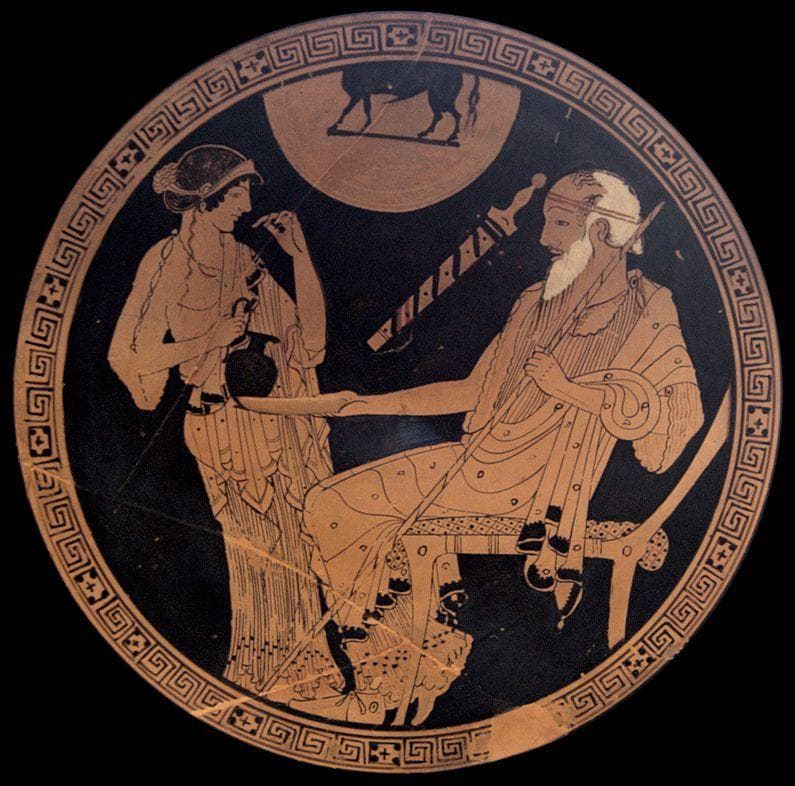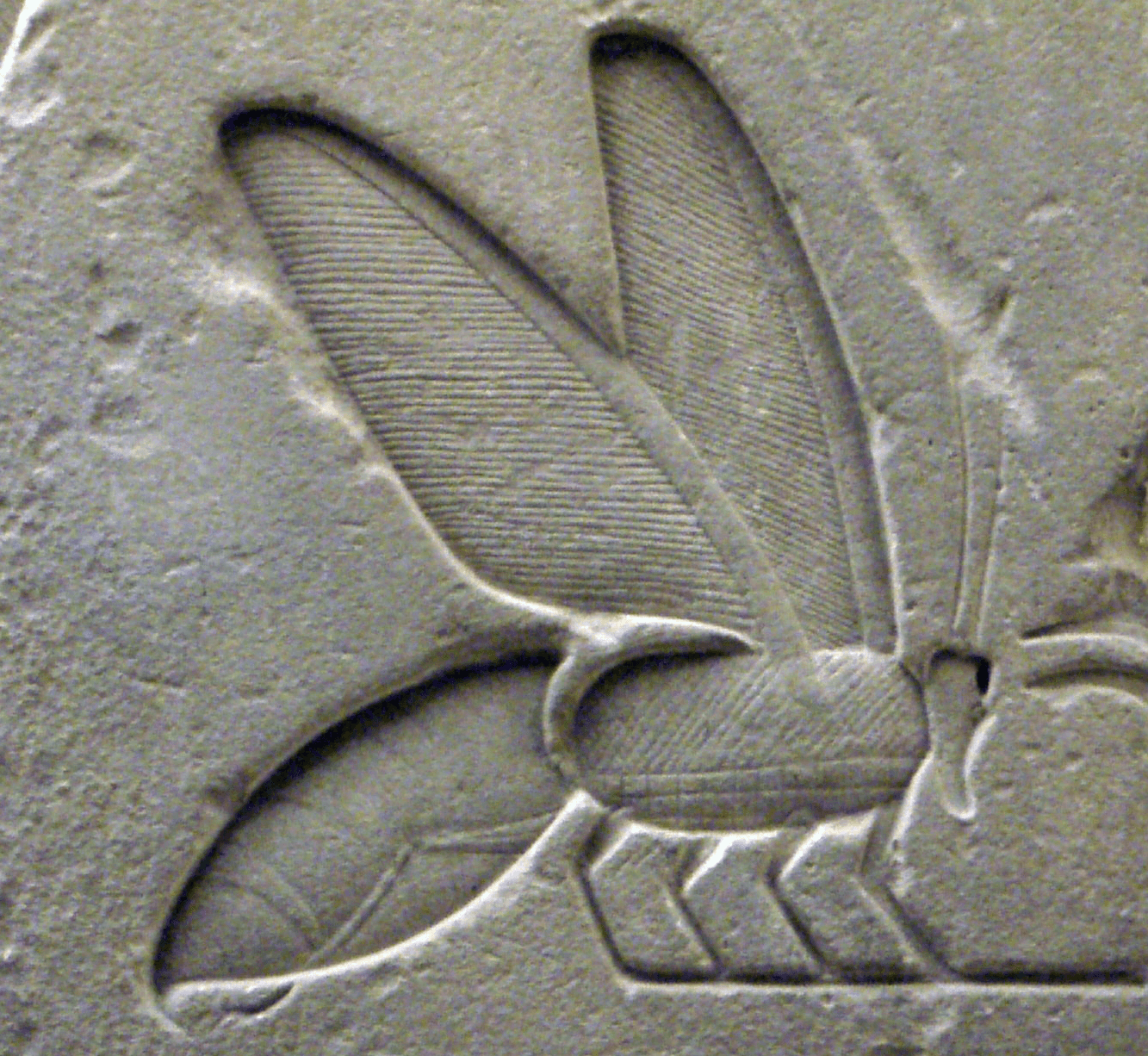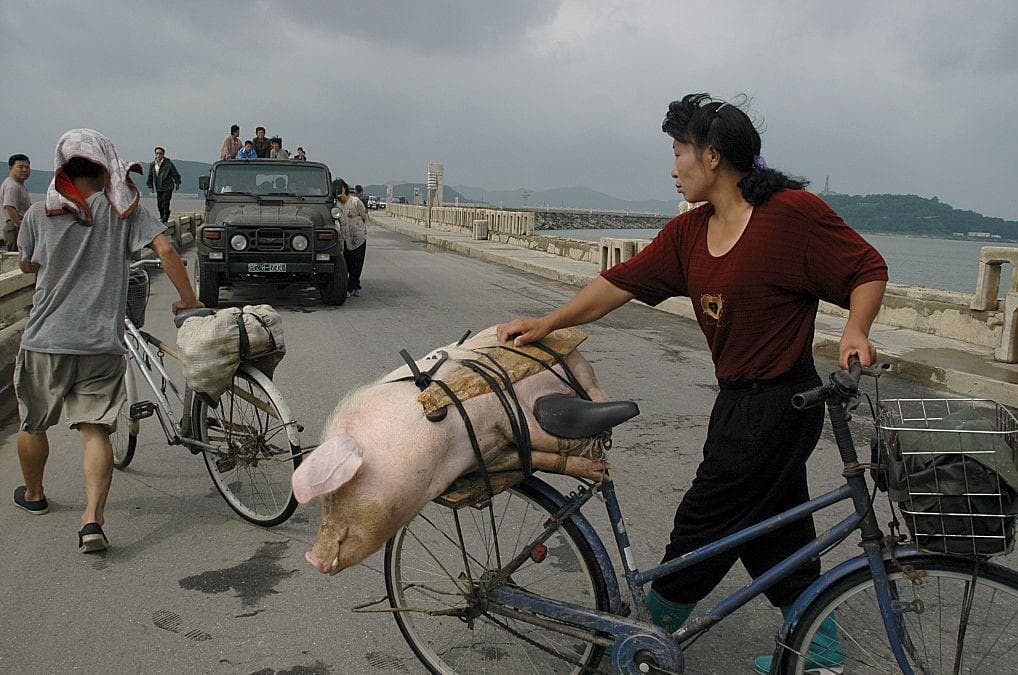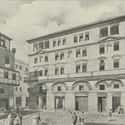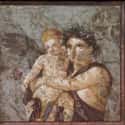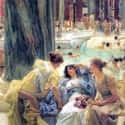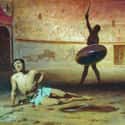-

(#2) Wealthy Residents Within The City Lived In Houses Close To The Imperial Palace
One alternative to an insula was a single-family home called the domus. Wealthy Romans lived in domus - and the more money they had, the larger their home. Domus featured one or two stories with reception halls and living rooms called atria. Numerous bedrooms, dining rooms, a kitchen, and a bathroom accompanied outdoor spaces for relaxing. Larger houses could have multiple bathrooms and even private baths.
A domus in Rome was necessarily smaller than a house in one of the other cities in the Roman Empire thanks to the limited space and topography of the city. Some homes in the city could be more like villas, although villas were usually found in more rural settings. Villa-like locations were called horti, although the term also was used to describe gardens and the specifics remain somewhat unclear.
Locations of domus in Rome are difficult to identify, although they were presumably located outside the danger of a rising Tiber River and close to places of imperial importance. Domus could span an entire city block and, unlike insulae, were stand-alone structures that didn't face crowded Roman streets directly.
-
(#1) The City Was Overpopulated, But Housing Was Also Extremely Limited
As early as the sixth century BC, Rome began taking census information to assess the numbers and needs of its population. While the Romans kept records on population, historians debate the accuracy of the data. The population of Rome itself is generally believed to have been in the hundreds of thousands during the first century BC, perhaps as high as 800,000 during the reign of Augustus (r. 27 BCE-14 AD). The population of the city continued to go up, hitting as many as 1 million residents during the second century AD.
The population was a mix of free men and women of varying degrees of wealth. High numbers of slaves contributed to the crowded conditions in Rome, where space became increasingly limited. The development of insulae, or tenements, was the result of a need to house the large population. Insulae contained numerous apartments alongside businesses and shops, with large numbers of people living in close confines. Insulae were several stories high, poorly built, and home to poor and moderately wealthy Romans alike. They were also vulnerable to fires, collapse, and the spread of disease.
-

(#12) Common Citizens Could Play A Political Role
Any Roman citizen could hold political office and, with the establishment of tribunes in the fifth century BC, the plebian class earned a voice within the Roman political system. The wealthy class held control of the Roman Senate, but with increased pressure from farmers, servicemen, and the growing number of immigrants in Rome itself, the concept of citizenship was expanded through the second century BC.
Tribunes like Tiberius and Gaius Gracchi demonstrated the roles citizens could play in the Roman government. In addition to their second century BC agrarian reforms, they called for all of Rome's allies in Italy to become citizens. This didn't come to fruition, ultimately because Roman citizens feared what the outcome would do to their own livelihoods.
Citizens registered for the census every five years, reporting possessions, property, and the number of people in the family to the Roman government. Roman citizenship came with perks, such as the right to vote, but citizens were also obligated to provide loyalty and service to the state.
-
(#13) The Paterfamilias Oversaw Everything Within The Household
The patriarchal structure of life in Rome was dominated by the paterfamilias. The male head of the household was in charge of everything from business matters to property exchanges to arranging a husband for his daughter. The "father of the family" controlled every aspect of his children's lives, even selling them into servitude, disowning them, or ending their lives depending on the circumstances.
The paterfamilias did consult with the leading female in the home, the materfamilias - usually his wife but not always. Marrying a daughter meant transitioning her from the authority of her father to that of her husband, but women always remained partly loyal to her father's family and also partly loyal to her husband's.
If a man had no son, he could adopt one, many times opting to take in a nephew or distant family relative to serve as his heir.
The male head of the household also served a religious role, overseeing rites practiced to lares, panes, and other deities worshipped in the home.
-
(#3) People From All Walks Of Life Enjoyed The Public Baths
Everyone from slaves to Roman emperors visited public baths in the city. Called thermae by the first century BC, public baths included hot and cold rooms with pools, steam rooms, and dry heat rooms where people could clean themselves, carry out business transactions, and socialize.
Men and women used the same baths until the practice was forbidden by Emperor Hadrian (r. 117-138 AD) during the second century AD. Hadrian himself frequented baths in Rome, famously giving a veteran he saw "rubbing his back and the rest of his body against the wall" one of his own slaves to perform the duty. The veteran was scraping oil off his body, something that would usually be accomplished with a strigil. Most wealthy Romans had slaves or servants to scrape them, but their poor counterparts were forced to do it themselves. Soon after, with "a number of old men rubbing themselves against the wall for the purpose of arousing the generosity of the Emperor, he ordered them to be called out and then to rub one another in turn."
The number of baths in Rome increased from the first century BC through the fifth century AD. Baths also became more luxurious and included additional features like gymnasia and fountains. Historians estimate roughly 170 public baths existed in Rome in 33 BC, with the number rising to between 800 and 900 by 400 AD.
Emperors such as Trajan, Caracalla, and Diocletian gifted Rome elaborate baths that could serve thousands of Romans at one time. Diocletian (r. 284-305 AD) built the largest, a structure with massive pools lined with marble-clad walls and granite columns.
-
(#7) Citizens Partook In Different Forms Of Entertainment
Within the city of Rome, there were numerous ways to spend one's leisure time. At amphitheaters like the Colosseum, gladiatorial combat provided dramatic yet brutal ways to pass the time, while races at the Circus Maximus offered another escape from work and the obligations of daily life.
Recreational activities in Rome were meant to inspire loyalty among the masses while simultaneously demonstrating leadership, strength, and generosity on the part of the emperor.
Rome was also home to theaters of various sizes. Often modeled on Greek buildings, Roman theaters included tiered seating - sometimes built into a hill - and awnings to block the audience from sun and rain. The first permanent theater in Rome was build by Pompeius during the first century BC. Smaller theaters, called odea, were more likely to be home to musical performances, while larger theaters presented stage productions.
Not everyone was enamored by the array of entertainment options in Rome. Roman satirist Juvenal commented that the citizens of Rome only cared about "bread and circuses," having lost sight of their role in politics in exchange for food and fun.
New Random Displays Display All By Ranking
About This Tool
The Anthony dynasty was the most stable period of imperial power and was called the "golden age" of the Roman Empire. At that time, the status of the Senate was restored, and some measures to ease social conflicts were implemented. The rulers of the past dynasties received support and distributed relief food and monetary subsidies and organized entertainment activities to consolidate their power.
The lives of slave owners were extremely luxurious, and wealthy Roman men often spent time in public baths. Bathing was a fashion at that time, attracting thousands of idlers. The random tool introduced 13 things about life in ancient Rome.
Our data comes from Ranker, If you want to participate in the ranking of items displayed on this page, please click here.




